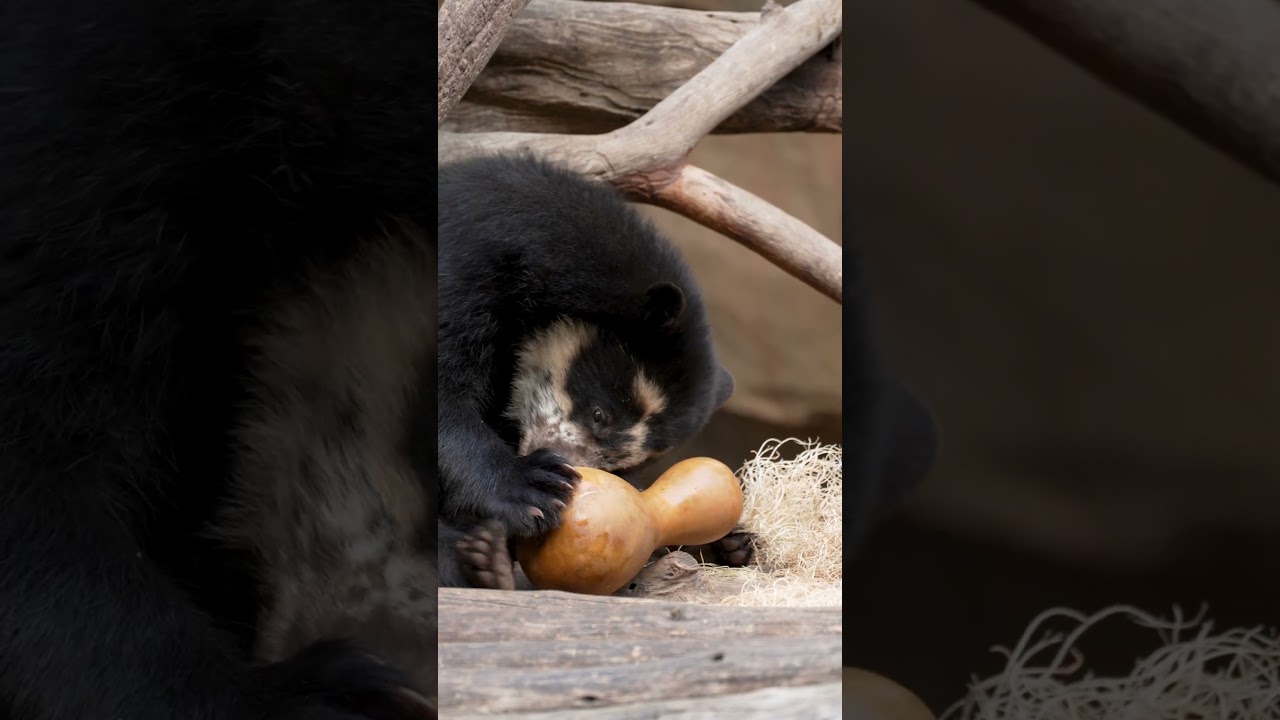– Introduction to the Andean Bear and its solitary nature
– The significance of honey and food sourcing for Andean bears in captivity and the wild
– Challenges and strategies in Andean Bear conservation efforts
– The role of zoo management in simulating natural bear habitats and behaviors
– Engaging the public through educational initiatives like the Andean Bear Honey Experience
The Andean bear, also known as the spectacled bear due to the distinctive markings around its eyes, is the only bear species native to South America and has established its presence in the diverse ecosystems of the Andes mountains. Known for their solitary behavior, these bears roam the highland forests in search of food, which predominantly consists of plant material; however, they also exhibit omnivorous tendencies that include honey as part of their diet.
The love for honey among Andean bears is not merely a trivial fact. Still, it underscores the importance of diverse food sourcing for the species’ survival in captivity and their natural habitat. Honey provides essential nutrients and is indicative of the bear’s adaptability and foraging intelligence. This foraging behavior involves climbing trees and carefully extracting honeycombs from beehives without sustaining too many stings. This foraging behavior is a fascinating aspect of the bear’s diet that draws interest from researchers and wildlife enthusiasts.
While the Andean bear is an endearing symbol of South American wildlife, it faces various challenges that threaten its existence. Habitat loss due to agriculture, livestock, urban development, poaching, and human conflicts have all contributed to the species’ decline. Conservation efforts are therefore critical in ensuring these bears remain an integral part of our planet’s biodiversity. Strategies include habitat preservation, creating wildlife corridors, enforcing anti-poaching laws and public education to reduce human-bear conflicts.
In the controlled environment of a zoo, management faces the task of replicating the natural habitat and behaviors of the Andean bear to promote physical health and psychological well-being. This involves constructing expansive enclosures with varied terrain and vegetation, providing enrichment activities that stimulate the bears’ instincts and opportunities to forage and explore, much like they would in the wild.
A key part of zoo management’s efforts involves public engagement and education. An initiative like the Andean Bear Honey Experience does more than entertain; it offers invaluable insights into the species’ behavior and conservation status. By observing bears engaging with specially designed feeding puzzles to access honey, visitors gain an appreciation for the intelligence and adaptability of these animals, fostering a connection that can inspire conservation actions.
Throughout the Andean Bear Honey Experience, the spectators witness the bears’ remarkable problem-solving skills, which are not limited to food-related tasks. Their strong sense of smell and skill are on full display, echoing these bears’ behaviors when raiding bees’ nests in their natural habitat. This experience reinforces the significance of supporting initiatives that conserve the species and its environment.
Moreover, the Andean Bear Honey Experience serves as a microcosm of broader efforts to conserve vulnerable species by enlightening visitors on the bear’s ecological role and its threats. Zoological institutions often collaborate with wild conservation projects, providing funding and research support. These partnerships help bridge the gap between public understanding and active conservation measures.
To foster a genuine connection with the species, the experience is crafted to be immersive and educational, shedding light on the delicate balance that the Andean bear maintains within its ecosystem. Zoos use such opportunities to highlight the bear’s varied diet and the problems associated with habitat fragmentation, which can disrupt their food supplies and lead to increased human-bear interactions.
While the Andean Bear Honey Experience may provide a snapshot of the species’ behavior, it also emphasizes the pivotal role of zoos in not only safeguarding genetic diversity through breeding programs but in championing the cause of wildlife conservation among the general public. By supporting such programs, visitors indirectly contribute to the efforts that extend far beyond the confines of a zoo, impacting conservation work on a global scale.
As our world grapples with environmental challenges, the story of the Andean bear serves as a poignant reminder of the interconnectedness of life on Earth. The Andean Bear Honey Experience, though a simple interaction between bear and honey, encapsulates the larger effort to protect a species that epitomizes the beauty of biodiversity. These ambassadors of the Andes offer us a window into the natural world and inspire actions that support wildlife conservation, ensuring that future generations may continue to experience the wonder of the Andean bear.
*****
Source Description
What do you get when you give honey to a bear? A sticky bear. 🍯
The Andean bear habitat was abuzz when Alba and her cubs were treated to a multi-day experience that included flower scents, bee sounds, and honey. The bears extra-sticky sweet treat was created using gourds and honeycomb harvested on grounds by our entomology department to mimic bee hives they would naturally find in the wild.
Facebook – https://www.facebook.com/SanDiegoZoo/
Instagram – https://www.instagram.com/sandiegozoo/
Twitter – https://twitter.com/sandiegozoo
Giphy – https://giphy.com/sandiegozoo
TikTok – https://www.tiktok.com/@sandiegozoo
Twitch – https://www.twitch.tv/sandiegozoo


